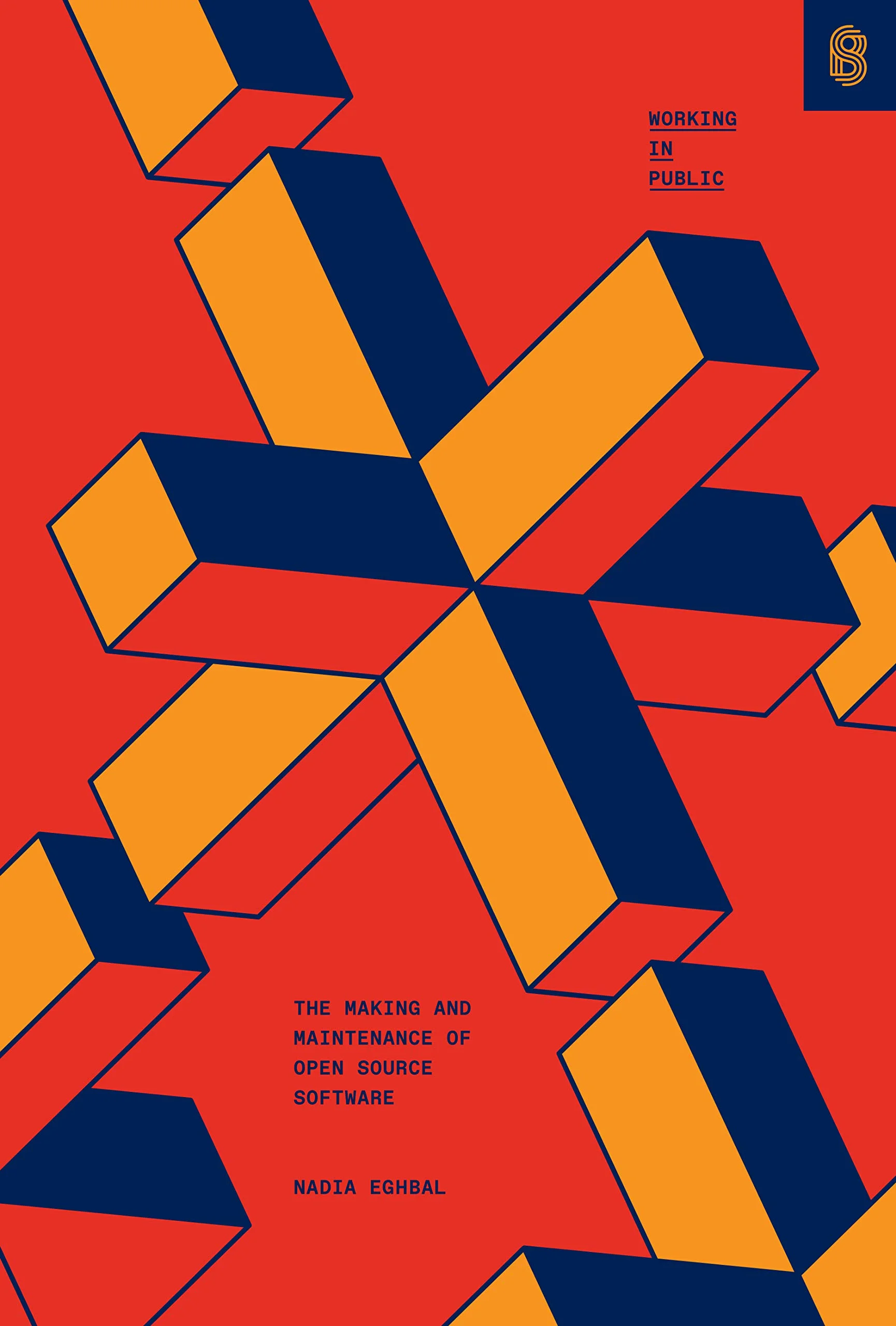The open source software ecosystem is a fascinating blend of personal passion projects and massive, collaborative corporate efforts. Sometimes there is even overlap when the passion projects are actually key components of the huge corporate projects or when a corporate project is abandoned by the original maintainers, but someone takes up the cause and makes it their personal passion project. Regardless of where an open source project falls on that spectrum, there is a lot of labor involved in the development and maintenance of open source projects. Working in Public: The Making and Maintenance of Open Source Software by Nadia Eghbal thoroughly examines the relationship between labor and open source.
In addition to an introduction and conclusion, Working in Public consists of five chapters split between two parts: "Part 1: How People Make" and "Part 2: How People Maintain." The first part covers "GitHub as a platform," "The Structure of an Open Source Project," and "Roles, Incentives, and Relationships." The second part explores "The Work Required by Software" and "Managing the Costs of Production." Each chapter deftly covers the topic at hand and provides copious footnotes and end-notes to support the information presented.

Working in Public begins with a brief overview of the history of open software development that covers the free software movement, the open source movement, and the modern, GitHub-centered version of open, which Eghbal notes is more focused on the practical aspects of open than philosophical aspects that are key parts of the free software and open source movements. The book provides a solid history of open source software development before transitioning to an examination of how things—and people—work in open source. There are many examples of the whys and the hows of working in open source, often including amusing analogies to make these complex topics easy to understand for readers who are not already enmeshed in open source. Eghbal’s writing manages to strike a balance between informative and entertaining.
There is sometimes a tendency to treat coding as the only form of open source labor, but Working in Public does not make that mistake. For example, there is an interesting discussion in the introduction about maintainers having to spend time dealing with minor pull requests instead of writing in-depth, substantive code of their own. Throughout the book, Eghbal explores labor in open source beyond just code. It provides valuable insights for readers of all levels and all manners of open source involvement—project maintainers, casual contributors, and users.
The only flaw with Working in Public is that it tries to serve as both an introduction to open source and an exploration of the labor involved in open source projects. This makes the book extremely approachable for readers with limited knowledge of open source, but that means that more experienced readers might find themselves skipping over lengthy passages that explain basic concepts. For example, half of the first full paragraph on page 12 is a parenthetical explanation of what software libraries are. The tendency to overexplain basic concepts does not distract from the overarching narrative too much, but it might turn some readers off before they get to the interesting parts.
Overall, I really recommend picking up a copy of this book. It is enjoyable to read and does a good job of covering its topic, though there are issues brought up in some of the footnotes that are worthy of further exploration by the author or by other researchers. Even the parts of the book that overexplain basic concepts are interesting but, as noted above, may fail to capture the attention of readers who are already well versed in open source development. Minor issues aside, the book provides an engaging overview of the history of open source and an insightful examination of the labor involved in open source development. In short, Working in Public is worth reading whether you are a maintainer, contributor, or user of open source.






Comments are closed.